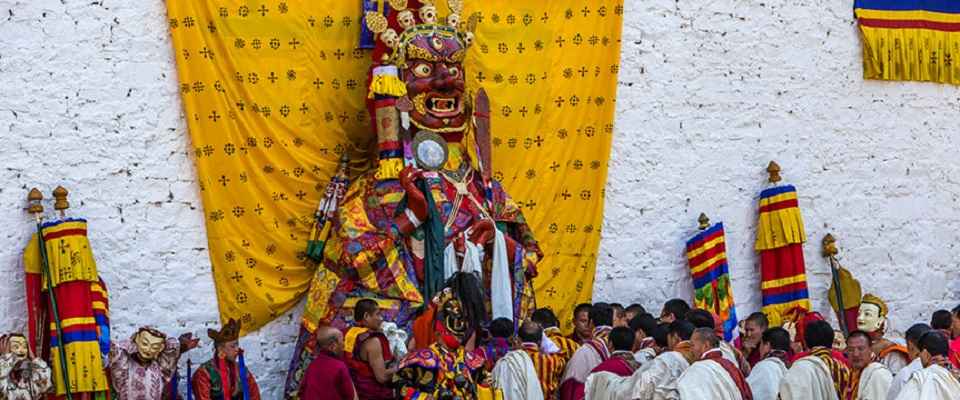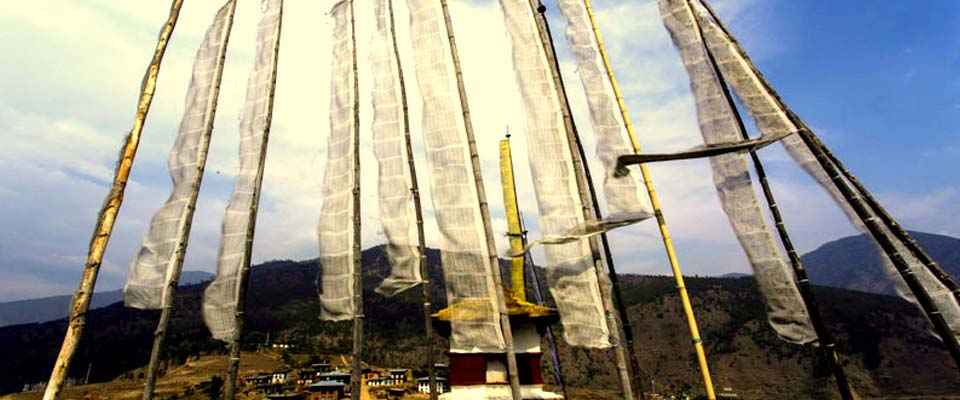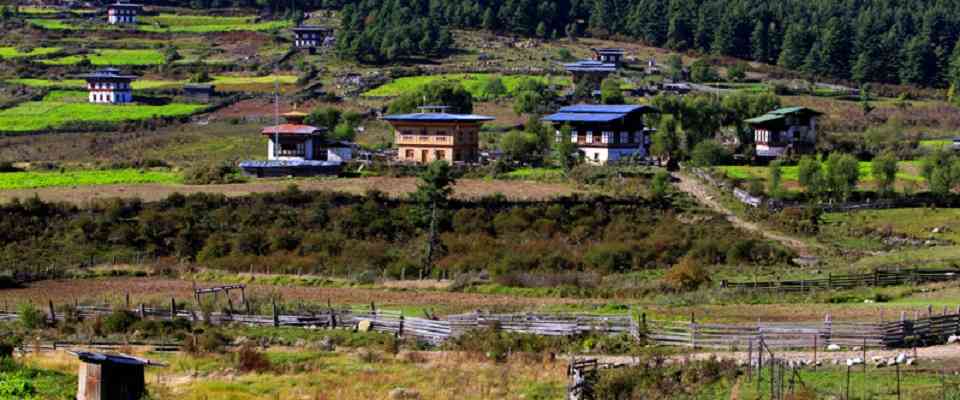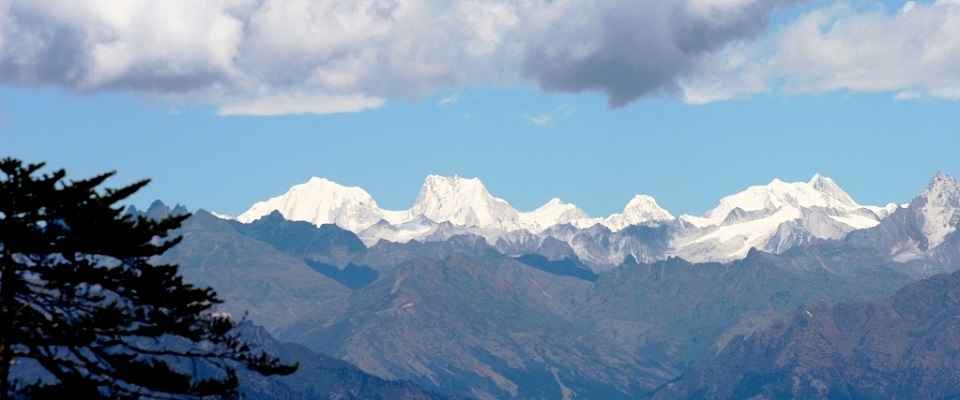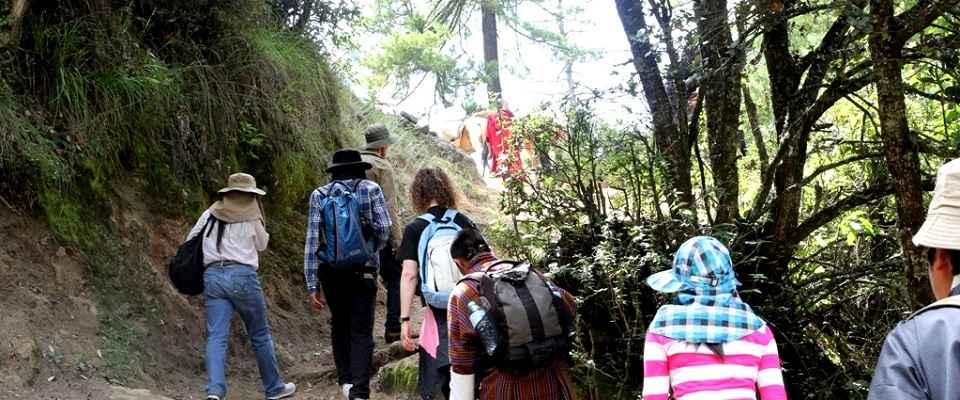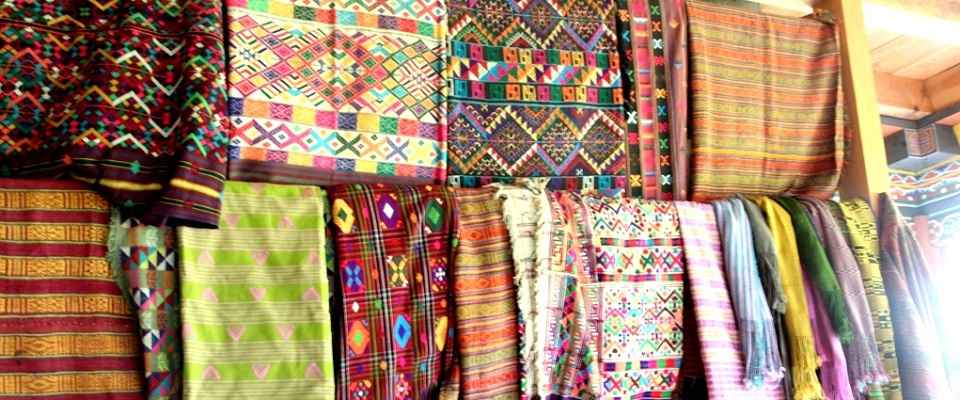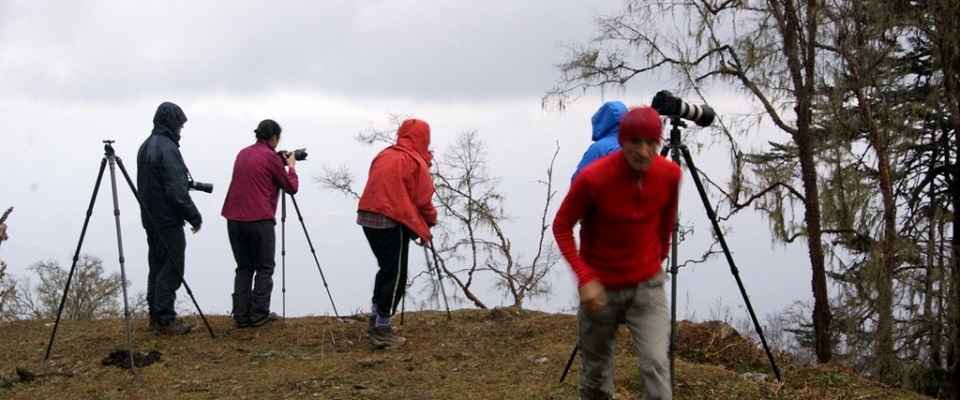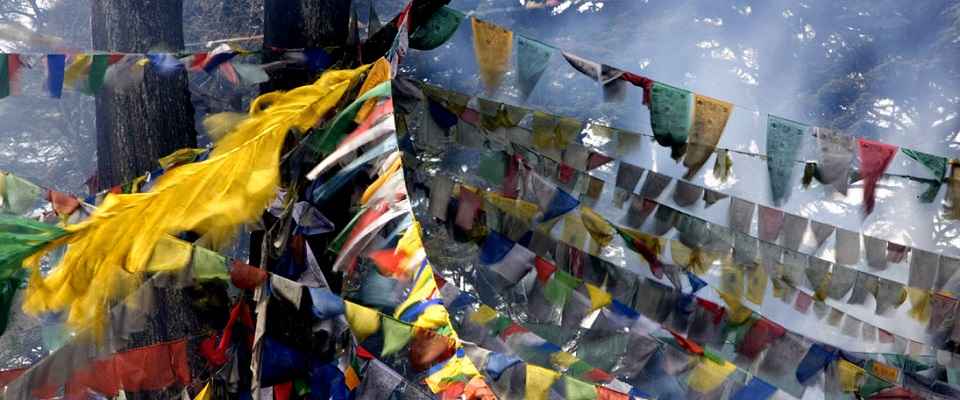Bhutan Mountain biking Tour is getting popular among-st the Bhutanese and visitors alike. The rugged topography is less friendly for cycling, which makes biking on this terrain a popular sport among-st visitors. Biking in Bhutan is a different experience.
Biking is a very unique way of seeing and interacting with the country, people and the Bhutanese environment. The increasing number of off-road roads makes biking more adventurous and satisfying. Most biking trips go through well paved roads while others trail on to dirt roads and trails. The relatively light traffic and biking through serene and pristine environment gives an intimate experience.
The more adventurous have the option of making side excursions for more “off-the-road” ventures if preferred. The surface accommodates most types of frame styles: from MTB, Hybrid, and Road, depending on your cycling style and experience.
Biking trails mostly meander through small towns and villages and rural areas; it’s just you, your bike, the tour group and the agrarian and natural scenery. Biking in Bhutan allows you many opportunities for self reflection along with the absorbing, rich environment. There are also numerous opportunities for optional hikes with a bit of climbing thrown in. There are some challenging climbs with one in particular that is more than seven hours. You peddle the pads over two miles (3400 meters) above sea level. The effort made is equally rewarded with a view and an experience that is as rare as anything in this increasingly globalizing and monotonous world. Riders should have an adequate level of fitness and stamina and be experienced enough in the art of mountain biking. Tours are fully supported by a van following riders. The van allows riders the option to sit in and take a break.
Day 1: Arrive Paro International Airport
If flying in from Delhi-Kathmandu, one will experience from the left hand side of the plane breath-taking views of Mount Everest, Kanchenjunga and other Himalayan peaks including Bhutan’s sacred Mount Jumolhari and Jichu Drake. On arrival at the Airport, representatives of Bhutan creative tours will receive and escort you to Hotel.
Lunch at the Hotel. Discuss the Tour Programme with the Tour Guide and rest leave for acclimatization.
Overnight: Hotel in Paro
Day 2:Paro – Paro
The entire Paro valley is relatively flat and is a great start to your first day of bicycling. Bicycle to Drukgyal Dzong (a ruined fortress 16 kms away from Paro town). Although in ruins, this Dzong is of great historical importance. It was here that the Bhutanese finally defeated the invading Tibetans and drove them back. One a clear day one can see Mount Jumolhari, Abode of the Goddess Jumo, rising 7,314 meters. Lunch at the hotel. Afternoon: Visit Ta Dzong, the National Museum of Bhutan. This was the watch tower of the ParoRinchen Pong Dzong. It was converted to the National Museum in 1968, and is located on a hill above the ParoDzong overlooking the Paro valley. Visit the ParoRinpungDzong. This massive fortress is located in Paro valley and is approached by a gently sloping flagstone road and a beautiful covered wooden bridge. Today the Dzong is the administrative seat of the district of Paro, and it also contains a state monastic community of approximately 200 monks. The central tower (Utse) of the Dzong, with its superb wood work, is one of the most beautiful in Bhutan. This Dzong was built in 1646 AD.
Overnight: Hotel in Paro.
Day 3:Paro – Thimphu
After breakfast, either drive or ride bicycles to Thimphu, the capital city. The drive meanders along the Paro and Thimphu River and takes approximately 2 hours (65 kilometers) by car and by Bike it depends on ones’ riding speed. The gradient of the road is excellent for bicycling as there are no steep climbs or descents. Check into Hotel Lunch at the hotel. Afternoon, visit the Memorial Chorten (huge stupa) built in the memory of the third King of Bhutan, King JigmeDorjiWangchuck, who reigned from 1952-1972. Visit the National Library where ancient manuscripts are preserved.
Overnight: Hotel in Thimphu.
Day 4: Thimphu -Thimphu
Morning: Bicycle to the SimtokhaDzong, the oldest Dzong in the country (built in 1629 AD). Opportunity to visit and meet some monks and observe their life within the monastery. In the old days, the oldest son of every family was offered to a monastery where the child grew up as a monk. Even now, it is not uncommon for some families to continue the practice. Visit the Handicrafts Emporium where Bhutanese textiles and other handicrafts are displayed and can be purchased. Lunch at the hotel.Afternoon, visit TashichhoDzong, the main secretariat building. This massive structure houses part of the Ministries, the offices of the King and the Throne Room. It also houses the State Monastic Body and the living quarters of the Chief Abbot. Visit the Painting School where traditional art is still practiced through the instructions in the art of painting Thankas (sacred Buddhist scrolls).
Bicycle to PangriZampa Monastery which is just beyond Dechencholing (5 Kms from Thimphu). This monastery was the residence of the founder of Bhutan, ShabdrungNgawangNamgyel when he arrived in Bhutan in 1616 AD.
Overnight: Hotel in Thimphu.
Day 5:Thimphu – Punakha/Wangdue
After an early breakfast, we will set out for Punakha and Wangdi. On the way, stop at Dochula Pass 3150m (10000ft) for a hot cup of tea/coffee and to enjoy a spectacular view of the eastern Himalayan mountain ranges (on a clear day). From Dochula, bicycle down into Wangdi which is located 51 Kms down. It is an exhilarating ride. After lunch, visit the PunakhaDzong which houses the district administration offices. It is also the winter residence of the State Monastic Body and its Chief Abbot, the Je Khenpo. Punakha was the former capital of Bhutan. The Dzong lies between two rivers, the Pho Chu (Male River) and the Mo Chu (Female River). This Dzong was built in 1637 AD. Visit WangdiphodrangDzong which is 13 Kms from Punakha. This Dzong and the town is perched on a hill, between two rivers and has a spectacular view. The Dzong was built in 1638 AD; a year after the PunakhaDzong was built. A tour vehicle will follow the bicycle group at all times in case of emergency or general weariness.
Overnight: Hotel in Wangdue or Punakha.
Day 6:Punakha/Wangdue – Trongsa
Drive to Trongsa, and on the way guests can bicycle certain stretches of the road. The terrain has steep ascents and descents and has some spectacular scenery.
Overnight: Hotel in Trongsa.
Day 7:Trongsa – Bumthang
After breakfast visit the ancient Watch Tower in Trongsa. This structure sits atop a hillock overlooking the TrongsaDzong and town. Ancient armors are displayed in the Watch Tower. Visit the TrongsaDzong, the ancestral home of the present Royal family of Bhutan. It was built in 1648 AD and is one of the most beautiful Dzongs in Bhutan. It is presently the administrative seat of the Trongsa district and the home of the monastic school. Built split levels on a narrow spur, this Dzong is an architectural marvel. The view from the Dzong is spectacular and one can see for many miles. In the old days, it was the vigilance point for both the eastern and western trade routes, thus a strategically important Dzong. After a light refreshment at the hotel, drive to Bumthang. After crossing a high pass, guests can bicycle all the way to Bumthang. The road is broad and all downhill after the pass.
Overnight: Hotel in Bumthang.
Day 8: Bumthang
After breakfast, bicycle around the most beautiful valley in Bhutan. It is possible to bicycle a radius of 60 Kms around the valley.
Overnight: Hotel in Bumthang.
Day 9:Bumthang (Chamkhar – Ura –Chamkhar)
After breakfast bicycle to Ura valley some 69 Kms from Bumthang. Ura is another beautiful valley over 9,500 ft high. Sightsee in Ura valley and drive back to Bumthang.
Overnight: Hotel in Bumthang.
Day 10:Bumthang (Chamkhar – Tang valley)
Today we will take tide to tang valley through the fidder road through the farm houses thefields and visit the museum in the tang valley which used to be the old palace and later in the evening you can chat with the school kids and walk around the schools.
Overnight in Tang.
Day 11: Bumthang (Tang valley- Chamkhar)
After the breakfast we will resume the journey back to Jakar valley and on the way we will visit the nunnery ,the only the Nyingma monastery.
Overnight in Bumthang.
Day 12: Bumthang -Wangdue
(197 Kms). On the way as and when possible, guests can bicycle certain stretches of the road. Or depending on your intrest today will be the longest ride from bumthang to Wangdiphodrang. Overnight: Hotel in Wangdue.
Day 13:Wangdue – Thimphu
Drive to Thimphu. After crossing Dochula Pass guests can bicycle all the way to Thimphu (26 Kms downhill). Sightseeing in Thimphu and if the day falls on the weekend visit the famous week end market in Thimphu where the local populace gathers for weekly shopping for produce. Overnight: Hotel in Thimphu.
Day 14:Thimphu – Paro
Guests can either drive to Paro or bicycle. Check into hotel and have lunch. After lunch, we will hike to the view point of the famous Taktsang Monastery. The hike takes about 4 hours round trip. Evening: Stroll around Paro town.
Overnight hotel in Paro.
Day 15:Paro– Paro(Tiger’s nest excursion)
After breakfast your car will drop you at the starting point of the excursion toview the spectacular Taktsang monastery (Tiger’s lair). The trail to the monastery climbs through beautiful pine forest, many of the trees festooned with Spanish moss, and an occasional grove of fluttering prayer flags. You stop at the cafeteria for a rest and refreshments and continue the hike (if not tired) for short while until you see, clearly and seemingly within reach, the remains of Taktsang monastery. Built in 1600s, this incredible monastery clings to the edge of a sheer rock cliff that plunges 900 meters into the valley below. The history states that Guru Padmasambhava, the Tantric mystic who brought Buddhism to Bhutan, landed here on the back of a flying tiger. Looking at the monastery flying tigers doesn’t seem so impossible after all. Lunch will be served at the cafeteria. Overnight at Hotel. Lunch will be served at a local restaurant.
Overnight in Paro.
Day 16: Departure from Paro
Drive to airport for departure, where your Guide and Driver would bid you farewell.

